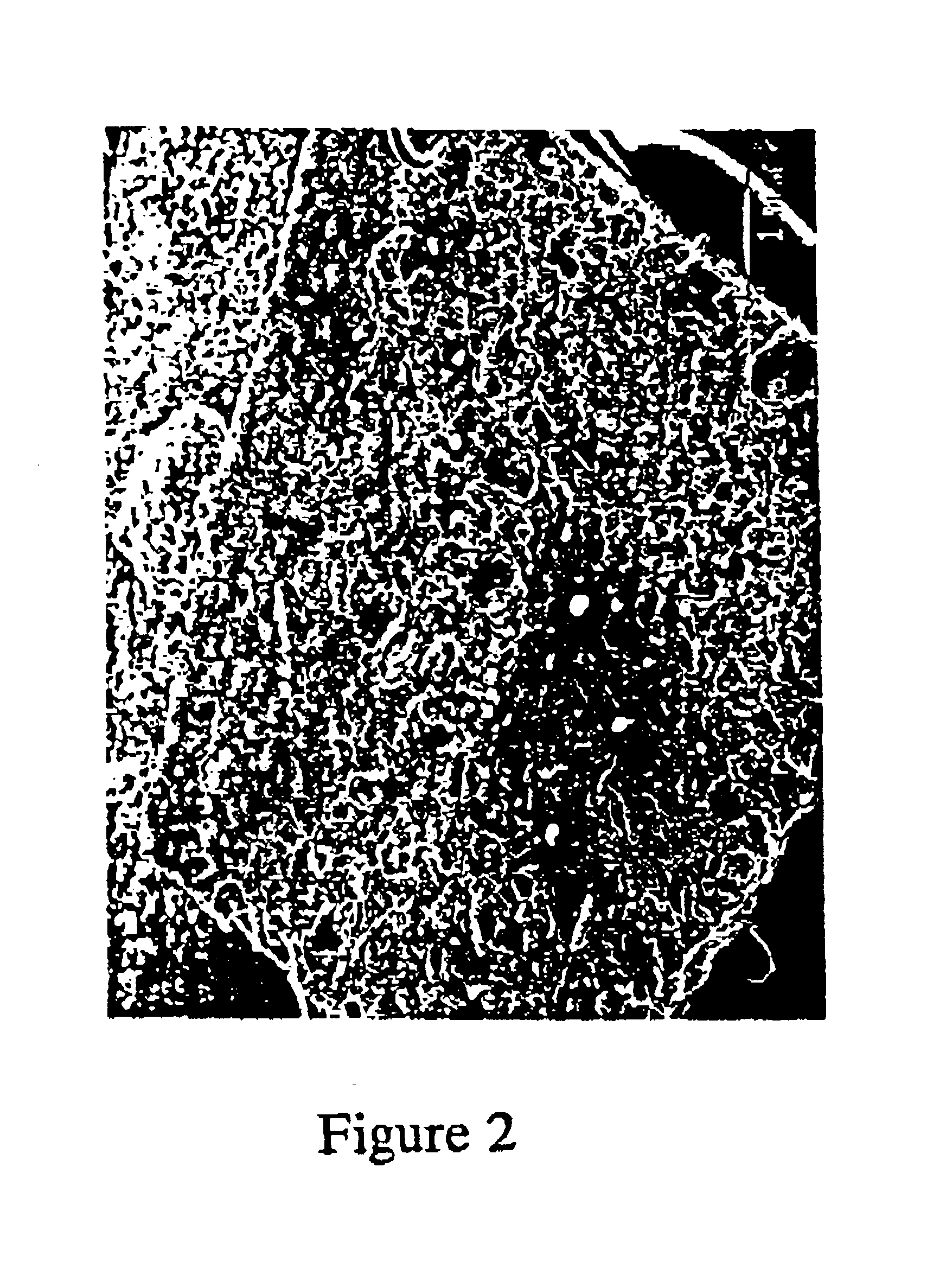Thermoplastic polymer propellant compositions
- Summary
- Abstract
- Description
- Claims
- Application Information
AI Technical Summary
Problems solved by technology
Method used
Image
Examples
example ii
Propellant compositions were prepared by the following procedure. A mixing bowl was heated to 210-215.degree. F. (99-102.degree. C.). Fine to medium particulate ammonium perchlorate (AP) was fed to the bowl, together with any burn rate catalysts, and mixed for two minutes. All remaining AP was added, and dry mixed for 3-5 minutes at high speed.
A miture of ethylene / vinyl acetate copolymer, polybutene or other plasticizer, rheology modifiers (if present) was prepared. This mixture was added to the mixer. Mixing was continued until the polymer had melted, and then for a further 10 minutes. The resultant mixture was then extruded into propellant grains in the ram extruder.
example iii
The procedure used for preparing pro-propellant blends was as follows. Using a Ross LDM-4 double planetary mixture, the temperature was set at 265.degree. F. (129.degree. C.), when the ethylene-vinyl acetate copolymer was Elvax.TM. 205 or 210 polymer. All fine dry materials of the composition were added to the mixing bowl, with any dust being allowed to settle. The mixing head was then wiped to remove settled material. The Elvax ethylene-vinyl acetate copolymer and all other medium to coarse materials were added, including fluid ingredients if any. A vacuum was thien applied to the mixture.
The dry mixing cycle was commenced, at low speed mixing. The mixing speed was increased when the temperature passed the melting point of the composition, typically about 100.degree. C., and mixing was continued for 20 minutes. The mixing bowl was scraped down once after about 10 minutes.
The mixing head was then lifted, leaving the blades at the surface of the composition for 1-2 minute to allow ad...
example iv
A composition was prepared in a K-5 air mixer. The mixing bowl temperature was set at 99-102.degree. C., and all fine to medium sized particulate ammonium perchlorate and any burn rate catalyst was added to the mix bowl. The mixtule was then mixed at high speed for 2 minutes. Any remaining ammonium perchlorate was addsd and the resultant mixture was preheated for 3-5 minutes under high speed mixing. A mixture of Elvax ethylene / vinyl acetate copolymer with any polybutene or other plasticizer, rheology modifiers or other ingredients was then added, and mixed at a moderate mixing speed. After the mixture had reached the melting point, the mixture was mixed for a further 10 minutes. The mixture was subsequenty extruded into grains.
Using this procedure a composition was prepared as follows:
Processing was difficult in that the composition exhibited high initial tack, requiring more frequent scraping.
The procedure was repeated, using a pre-blend of binder PB-6 and NZ-33. All ammonium perch...
PUM
 Login to View More
Login to View More Abstract
Description
Claims
Application Information
 Login to View More
Login to View More - R&D
- Intellectual Property
- Life Sciences
- Materials
- Tech Scout
- Unparalleled Data Quality
- Higher Quality Content
- 60% Fewer Hallucinations
Browse by: Latest US Patents, China's latest patents, Technical Efficacy Thesaurus, Application Domain, Technology Topic, Popular Technical Reports.
© 2025 PatSnap. All rights reserved.Legal|Privacy policy|Modern Slavery Act Transparency Statement|Sitemap|About US| Contact US: help@patsnap.com



